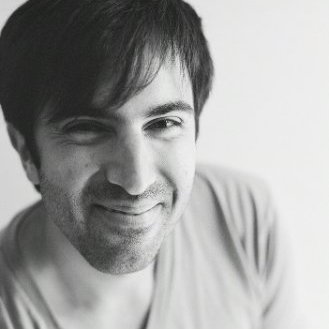
Maz Ameli has over 10 years of experience in product and user experience design, and is currently a Product Design Lead at Lookout where he oversees design for Lookout’s Mobile Threat Protection enterprise product. He’s a native of the Bay Area, and has a wife and baby girl whom he loves very much.
RSVP for a Coffee Talk with MazWhat motivates you to do great work?
The knowledge that a person is sitting down somewhere looking at what we’ve made and using it to try to get something done in her real life. I care about that person, and I want to do my very best to make her life easier, richer, and better.
What’s your / your firm’s superpower?
Our team of designers and researchers. We rely on each other to make ourselves better, smarter, and faster. I know we wouldn’t dig as deep, or explore as broadly and diligently if it weren’t for our willingness to push and prod and ask each other the really hard questions.
What keeps you up at night?
Lately, my eight-month-old daughter.
Does the firm have a mascot / sacred room / nicknames / anything quirky?
Our team has a bizarre obsession with the stickers in the LINE app. I’ve also known one of our product designers to show up to work in lederhosen.
What project has had the biggest impact on you?
By far, working on Lookout’s newest enterprise product, Mobile Threat Protection, has pushed me the most to grow as a designer. The problems enterprises face, and the complexity of those problems, are both daunting and exhilarating as a product designer.
What are three things you believe in right now?
These days I really believe that design is about forcing and facilitating conversations and decisions. To that end, I think right now designers must know how to prototype motion and interaction in order to enable a conversation around an artifact that’s truer to the actual experience. However, I also think that designers can’t possess the depth of insight and wealth of empathy that’s truly required in these kinds of conversations without unplugging more from the torrent of notifications, alerts, emails, and chatter of our digital lives — and instead spending more time in deep, sustained, contemplative thought.
What excites you about the future of design?
I love that design has become more and more about people over the years — we’re focused on their needs, wants, problems, and desires. I think I’m most excited, though, about asking if what we are all designing, and the way we are designing, is good for people and for society at large. Technology is only going to become more ubiquitous globally — how do we want that world to look? I hope it’s a world where we’re more compassionate to each other, more connected interpersonally, and more engaged with the very real problems that we face as a people and a planet.
What are your tips for other designers out there who may just be getting started?
Before you try to dive into solving the problem, make sure you’re solving the right problem. And always ask, “why?”

